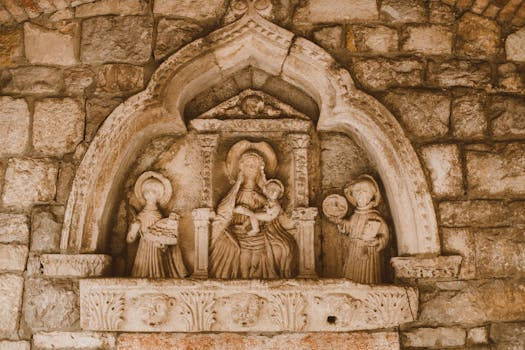Historic preservation efforts saving architectural gems
Historic preservation efforts have been instrumental in saving architectural gems around the world. These efforts aim to protect and conserve buildings, structures, and spaces that hold historical, cultural, or architectural significance. Without them, many of these iconic structures would have been lost to the ravages of time. From ancient temples in Asia to medieval castles in Europe, these buildings serve as a window to the past and provide a tangible connection to our cultural heritage. Let’s explore how historic preservation efforts are playing a crucial role in saving these architectural gems.
The Importance of Historic Preservation
The importance of historic preservation goes beyond just saving old buildings. It is about recognizing and valuing our shared history and heritage. These buildings and structures are a testament to the achievements and aspirations of our ancestors. They represent the evolution of society, culture, and technology over centuries. Each building tells a unique story and serves as a tangible link to our past. By preserving these structures, we are not only protecting our history but also ensuring its continued accessibility for future generations.
Preserving Architectural Gems
While all historic structures hold value, some are truly architectural gems that need to be preserved at all costs. These include buildings and structures with unique designs, outstanding craftsmanship, and historical or cultural significance. From grand palaces to humble homes, these structures are a reflection of the cultural and societal context in which they were built. They serve as a physical record of the beliefs, values, and daily life of those who inhabited them. Without preservation efforts, these gems would be lost forever.
Challenges of Historic Preservation
Despite their importance, historic preservation efforts face numerous challenges. Perhaps the biggest obstacle is the constant threat of destruction, demolition, and development. Many historic buildings are located in urban areas, where development pressures are the highest. Owners, developers, and city governments often see these structures as obstacles to progress and opt to tear them down to make space for new buildings. Even in cases where there are regulations in place for preservation, enforcement can be difficult, and loopholes can be exploited.
The Role of Technology in Preservation
Technology has played a significant role in the preservation of architectural gems. Advanced imaging techniques, such as laser scanning and photogrammetry, allow experts to create highly accurate 3D models of historic structures. These models serve as a digital record that can be used to monitor the condition of the building, track any changes over time, and aid in restoration efforts. It also enables virtual tours and online access to these structures, making them accessible to a wider audience.
Preservation Success Stories
Despite the challenges, there have been many successful preservation efforts around the world. In India, the restoration of the Taj Mahal in the 20th century helped save this iconic structure from decay. In Europe, the restoration of the Acropolis in Athens, Greece, ensured the survival of this ancient citadel. In the United States, the preservation of historic neighborhoods, such as Boston’s Beacon Hill and Charleston’s French Quarter, has maintained the character and charm of these cities.
Future of Historic Preservation
The future of historic preservation looks promising. Governments, organizations, and individuals are increasingly recognizing the value of preserving our cultural heritage. Regulations and laws for the protection of historic structures are becoming more stringent, and enforcement is improving. Furthermore, advancements in technology and communication have made it easier to raise awareness and rally support for preservation efforts.
In Conclusion
Historic preservation efforts play a crucial role in saving architectural gems around the world. These structures are not just old buildings; they are a representation of our shared history and cultural heritage. By protecting and conserving them, we are preserving our past for future generations. The challenges facing preservation efforts are significant, but with continued support and collaboration, we can ensure that these architectural gems are not lost to time. After all, they are not just buildings; they are a vital part of our identity and humanity.











